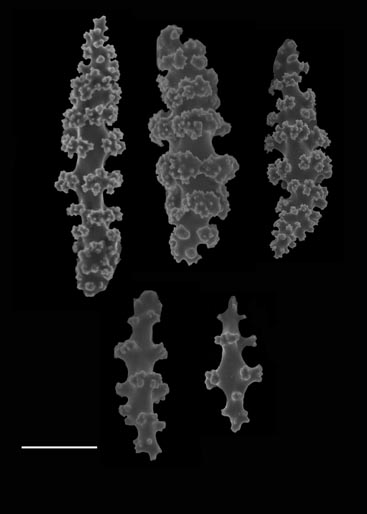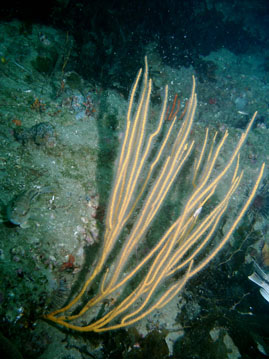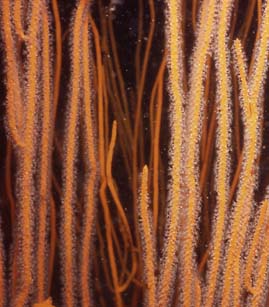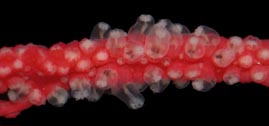CONTENTS
Introduction
The South Atlantic Bight
Methods
Octocoral Morphology
Glossary
Gorgonacean
Bauplan
see this for keys
Notes on the Species
Carijoa
riisei
Scleranthelia
rugosa
Telesto fruticulosa
Telesto nelleae
Telesto sanguinea
Bellonella rubistella
Pseudodrifa nigra
Nidalia occidentalis
Iciligorgia schrammi
Diodogorgia
nodulifera
Titanideum
frauenfeldii
Muricea pendula
Thesea nivea
Bebryce cinerea
Bebryce parastellata
Scleracis guadalupensis
Paramuricea sp.
Leptogorgia hebes
Leptogorgia punicea
Leptogorgia
cardinalis
Leptogorgia virgulata
Leptogorgia setacea
Leptogorgia euryale
Viminella
barbadensis
Renilla reniformis
Sclerobelemnon
theseus
Stylatula elegans
Virgularia presbytes
| Guide
to the Shallow Water (0-200 m) Octocorals of the South Atlantic
Bight.
S. T. DeVictor
& S. L. Morton, 2007
Leptogorgia virgulata
(Lamarck, 1815) Remarks. Leptogorgia virgulata
is one of the most common octocorals in the South Atlantic
Bight. Colonies have a distinctive whip-like colony form (hence
the common name “sea whip”), moderate branching near
the attached base, and can approach a height of one meter. The
branches are 2-5 mm in diameter with multiple rows of calyces along
the sides, sometimes with a bare strip. Calyces are moderately prominent
to completely flush and contain flat rods. The coenenchyme contains
short (<0.1 mm), asymmetrical disk spindles and longer (0.15 mm)
sculptured spindles. The anthocodial rods are at most half the length
of the longest spindles. Colonies may be uniform yellow, orange,
purple, white, or various shades in between, with corresponding
spicular coloration. Atlantic distribution: New York, unknown depth; Chesapeake Bay to Florida, Gulf of Mexico, 2-59 m (one record from 220 m); Brazil, unknown depth (Deichmann, 1936; Bayer, 1961; NMNH collections; SERTC collection).
|
|
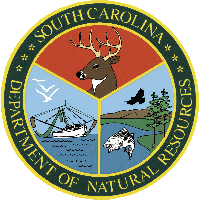 |
